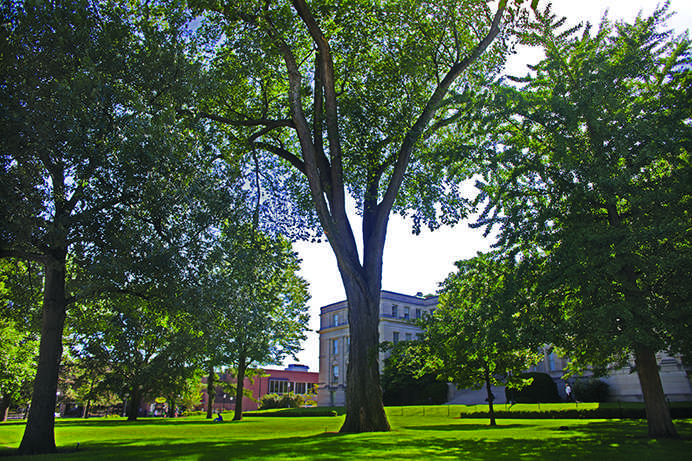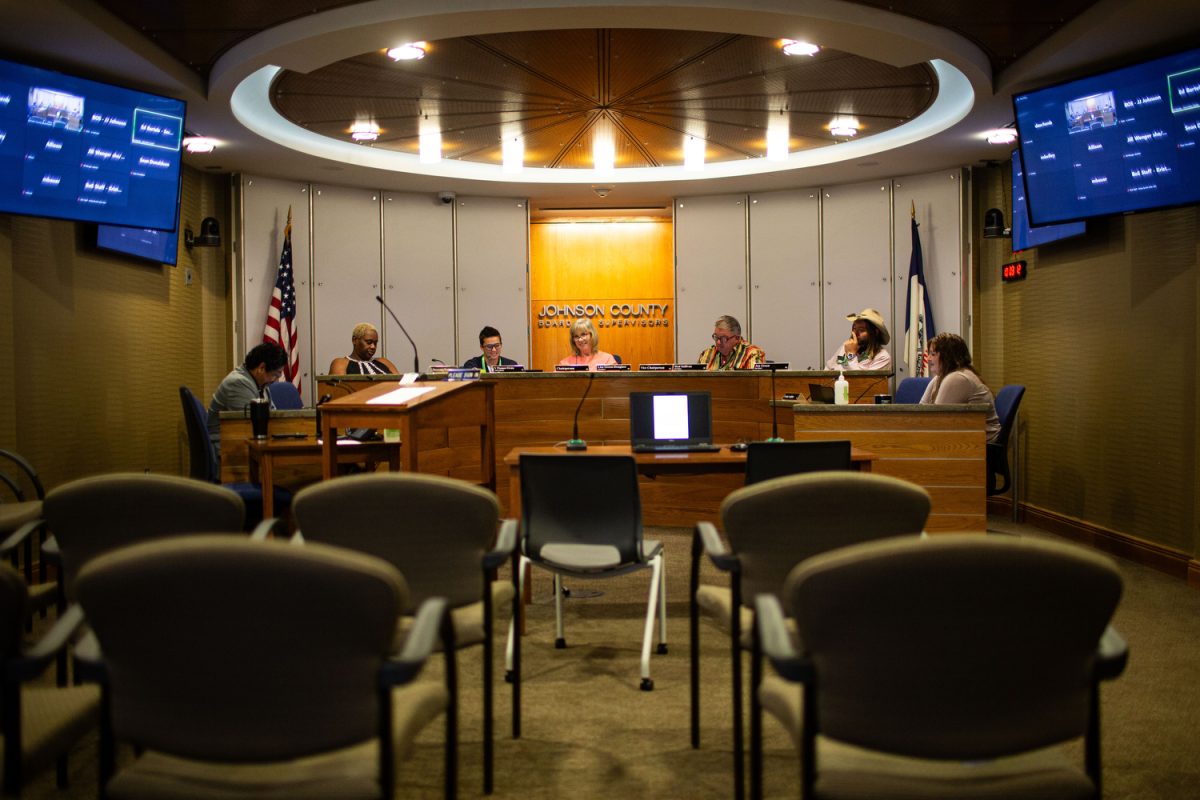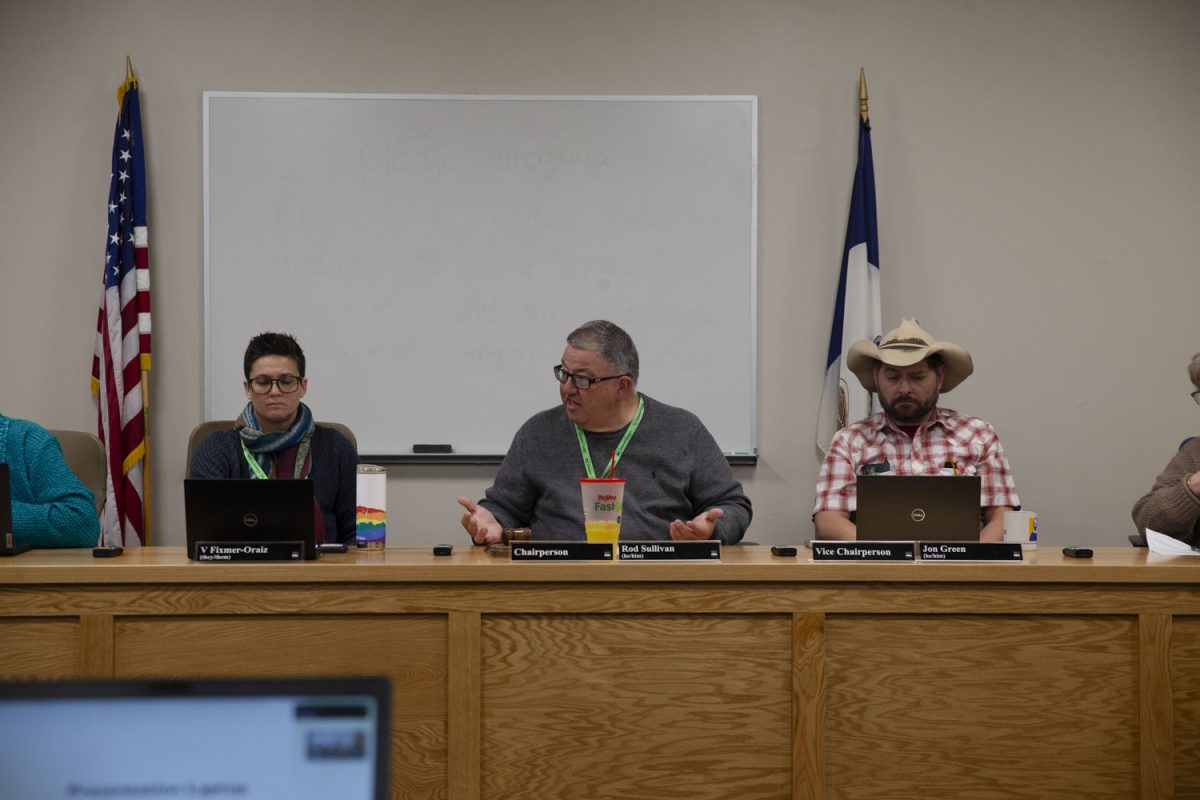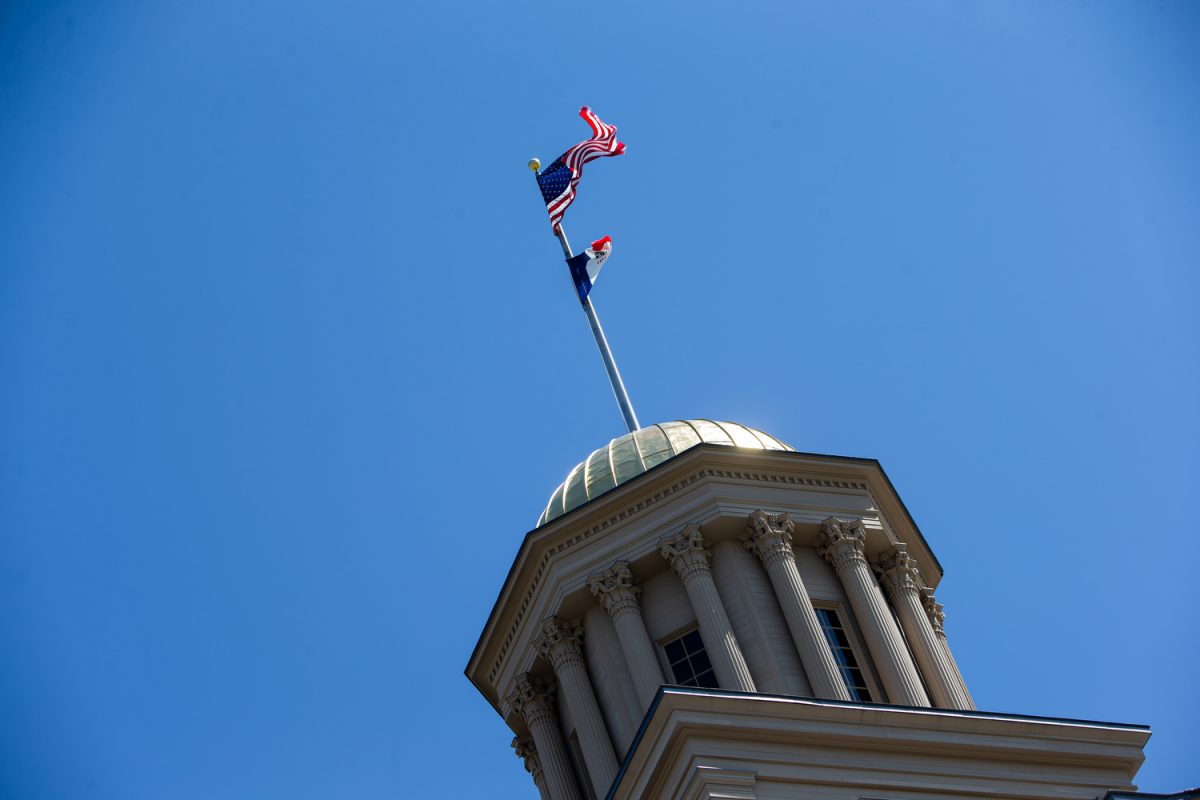Like the proud, sole survivor of a great war, it stretches upwards toward the sky, defying the disease that wiped out thousands like it.
Once, more than 3,000 American elm trees existed on the University of Iowa campus — 100 of those on the Pentacrest alone.
For decades they shaded and uplifted the spirits of hundreds of thousands of students, faculty, and staff. However, when Dutch elm disease swept through the campus in the 1960s, the vast majority of the trees were obliterated, leaving only two behind.
The greatest of these stands today, towering over nearby Schaeffer Hall. Around 93 feet tall with a trunk 16 feet around — it’s the state champion, certified as the largest American elm in the state of Iowa. Interestingly, it used to be much taller, until a 1998 wind storm tore off the top 20 feet of branches.
The walnut tree with the lightning split trunk, growing in front of Macbride Hall, is also a state champion, as are a handful of other trees scattered throughout Iowa City.
UI aborist Andy Dahl estimates that the tree is around 130 years old and was planted sometime in the 1880s.
“It’s akin to having a dinosaur on campus,” he said.
In old photos of the university, dating back to 1913, the tree can be seen standing gracefully on the Pentacrest, surrounded by dozens of elms.
Seven American elms currently exist on the UI campus, but most of them are immature, having been planted only within the past couple years.
Why this tree survived the plague out of more than 3,000 other trees is a mystery, Dahl said, and is probably due to some combination of luck and natural resistance.
Its current resistance is supplemented, however; Dahl said the elm tree is the only tree on campus injected with a fungicide in order to protect it from a resurgence of Dutch elm disease.
However, he also said the fungicide is only preventative, and if the tree is infected, there is little people can do.
Dahl said the natural lifespan of a local American elm is around 150 years. However, if there’s no major weather events to tear it down, and the tree doesn’t get sick, Dahl said, he’s confident it can last another 50 years, giving this tree quite a few more decades to stretch toward the sky.
However, come one, three, or five decades from now when the tree inevitably meets its end, it won’t be completely lost to history.
Chad Giblin, a research fellow at the University of Minnesota Department of Forest Resources, is involved in researching elm trees in the hopes of finding out what makes a tree resistant to Dutch elm disease.
To do this, he collects cuttings from “survivor” elms, old and large elm trees that have faced the disease and come out swinging, and as it happens, the Pentacrest American elm is just that sort of tree.
Giblin warns however, just because the Pentacrest elm was a survivor tree and has lived a long time doesn’t make it naturally resistant to the disease.
After this very disease, which wiped out almost every other local elm tree, the university planted hundreds of ash trees to replace them, many of which can be seen lining the T. Anne Cleary Walkway and which are now also being threatened by the emerald ash borer.
If the beetle infects the campus, Dahl said, there is almost nothing officials will be able to do, and the UI might face another great tree die out.
To Dahl, this tree, and others like it bring serenity, comfort, and happiness.
“When you see people lounging about on a summer day, they’re usually under a tree,” he said. “They not talking pictures of the turf in the fall, they’re taking pictures of a tree.”
Dahl isn’t just waxing poetic. In 2013, Geoffrey Donovan, an economist at the U.S. Forest Service, led a study in which he analyzed the relationship between human health and trees.
What he found was in counties infested with the emerald ash borer, where millions of trees died and were removed in a very short period of time, there was a corresponding increase in mortality related to heart and respiratory illnesses.
The lack of trees didn’t cause people to die, but Donovan said there are four main ways trees affect human health.
The first, he said, is air quality, which trees help to maintain. The second is the distressing effect nature has on humans. Placing people in natural environments helps them to relax and reduces a host of health issues.
The third is that the presence of trees usually means recreation areas such as parks, in which people walk and get exercise, and the fourth is areas such as parks encourage socialization and reduce isolation, which has been shown to decrease mental and physical health.
In addition to health, however, Donovan said there are so many other ways trees improve people’s lives, such as lower crime rates and increased property value.
“These trees, they affect the human spirit in a way few other things can,” Dahl said. “They kind of transcend time; they reach different generations, and I feel so privileged to be a part of that.”
Chad Giblin, a research fellow at the University of Minnesota Department of Forest Resources, is involved in researching elm trees in the hopes of finding out what makes a tree resistant to Dutch elm disease.
To do this, he collects cuttings from “survivor” elms, old and large elm trees that have faced the disease and come out swinging, and as it happens, the Pentacrest American elm is just that sort of tree.
Giblin warns however, just because the Pentacrest elm was a survivor tree and has lived a long time doesn’t make it naturally resistant to the disease.
After this very disease, which wiped out almost every other local elm tree, the university planted hundreds of ash trees to replace them, many of which can be seen lining the T. Anne Cleary Walkway and which are now also being threatened by the emerald ash borer.
If the beetle infects the campus, Dahl said, there is almost nothing officials will be able to do, and the UI might face another great tree die out.
To Dahl, this tree, and others like it bring serenity, comfort, and happiness.
“When you see people lounging about on a summer day, they’re usually under a tree,” he said. “They not talking pictures of the turf in the fall, they’re taking pictures of a tree.”
Dahl isn’t just waxing poetic. In 2013, Geoffrey Donovan, an economist at the U.S. Forest Service, led a study in which he analyzed the relationship between human health and trees.
What he found was in counties infested with the emerald ash borer, where millions of trees died and were removed in a very short period of time, there was a corresponding increase in mortality related to heart and respiratory illnesses.
The lack of trees didn’t cause people to die, but Donovan said there are four main ways trees affect human health.
The first, he said, is air quality, which trees help to maintain. The second is the distressing effect nature has on humans. Placing people in natural environments helps them to relax and reduces a host of health issues.
The third is that the presence of trees usually means recreation areas such as parks, in which people walk and get exercise, and the fourth is areas such as parks encourage socialization and reduce isolation, which has been shown to decrease mental and physical health.
In addition to health, however, Donovan said there are so many other ways trees improve people’s lives, such as lower crime rates and increased property value.







